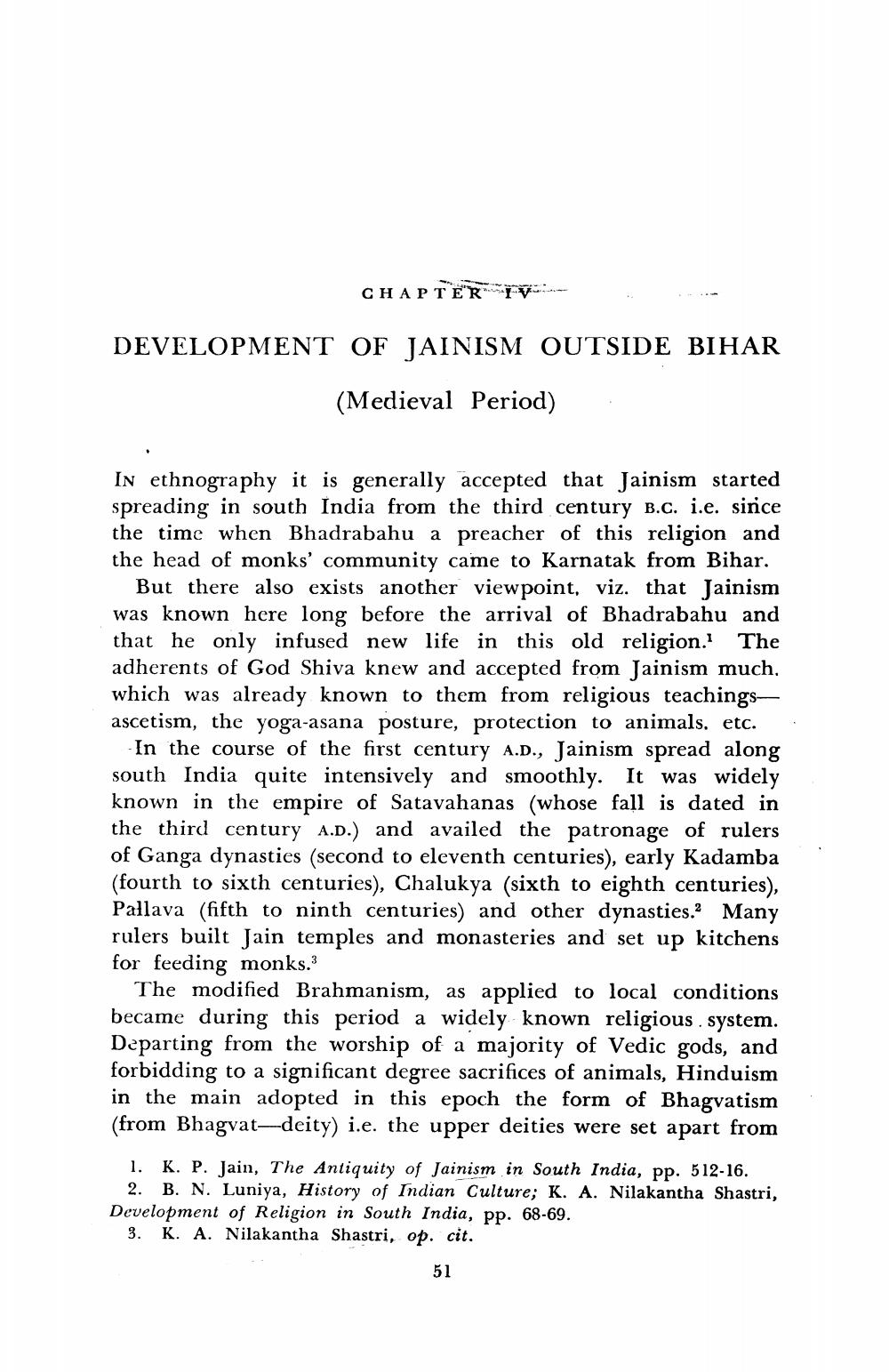________________
CHAPTER TV
DEVELOPMENT OF JAINISM OUTSIDE BIHAR
(Medieval Period)
IN ethnography it is generally accepted that Jainism started spreading in south India from the third century B.C. i.e. since the time when Bhadrabahu a preacher of this religion and the head of monks' community came to Karnatak from Bihar.
But there also exists another viewpoint, viz. that Jainism was known here long before the arrival of Bhadrabahu and that he only infused new life in this old religion. The adherents of God Shiva knew and accepted from Jainism much, which was already known to them from religious teachingsascetism, the yoga-asana posture, protection to animals, etc. .
In the course of the first century A.D., Jainism spread along south India quite intensively and smoothly. It was widely known in the empire of Satavahanas (whose fall is dated in the third century A.D.) and availed the patronage of rulers of Ganga dynasties (second to eleventh centuries), early Kadamba (fourth to sixth centuries), Chalukya (sixth to eighth centuries), Pallava (fifth to ninth centuries) and other dynasties. Many rulers built Jain temples and monasteries and set up kitchens for feeding monks.3
The modified Brahmanism, as applied to local conditions became during this period a widely known religious system. Departing from the worship of a majority of Vedic gods, and forbidding to a significant degree sacrifices of animals, Hinduism in the main adopted in this epoch the form of Bhagvatism (from Bhagvat-deity) i.e. the upper deities were set apart from
1. K. P. Jain, The Antiquity of Jainism in South India, pp. 512-16.
2. B. N. Luniya, History of Indian Culture; K. A. Nilakantha Shastri, Development of Religion in South India, pp. 68-69.
3. K. A. Nilakantha Shastri, op. cit.
51




